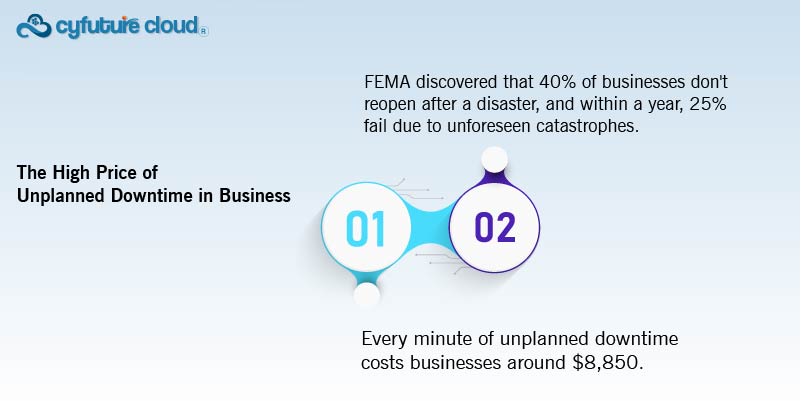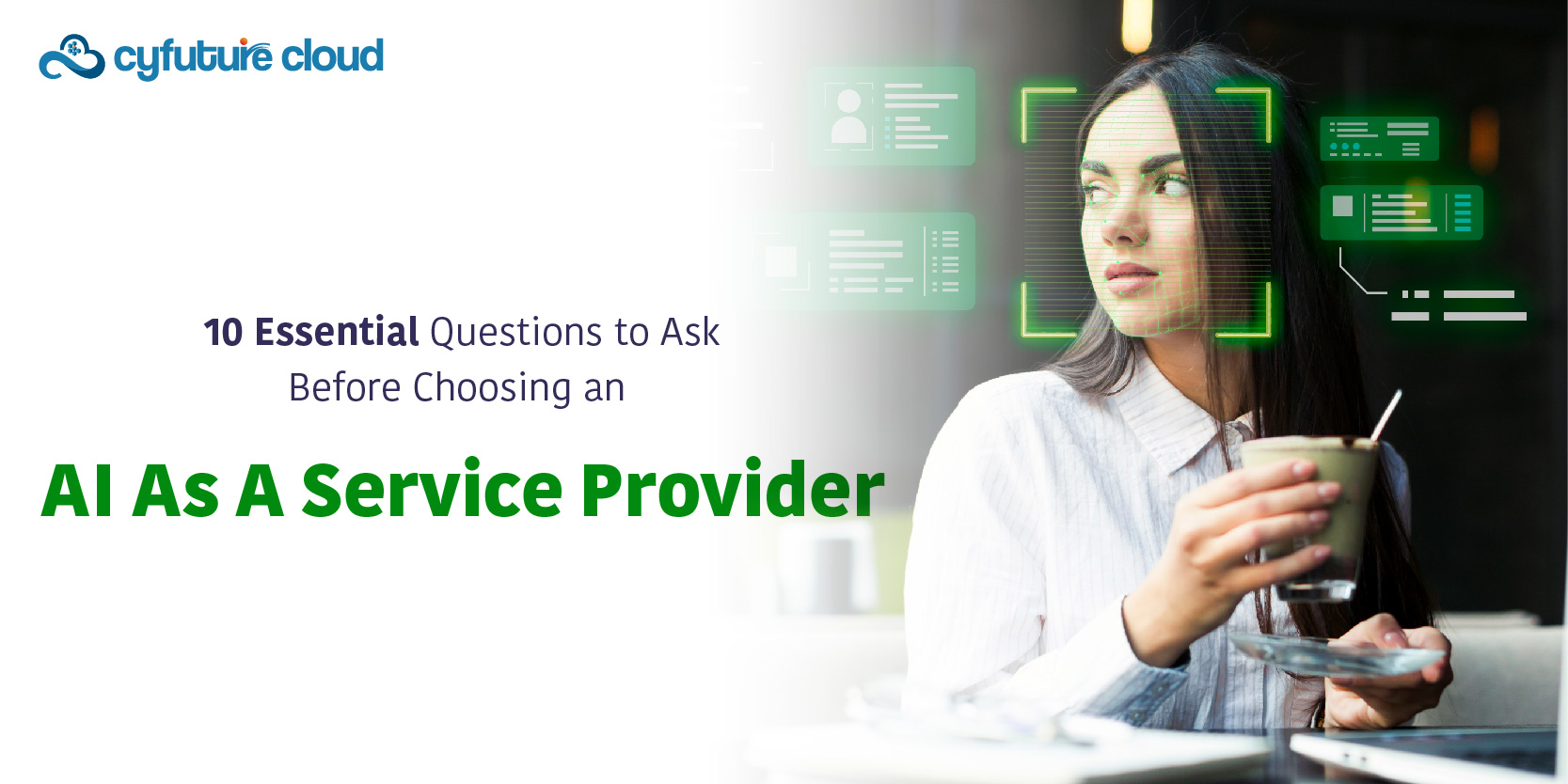Table of Contents
- What is DraaS, and why is it useful?
- What Are the Three Types of Disaster Recovery Sites?
- Why Are Disaster Recovery Solutions Important?
- Consider the best cloud disaster recovery solutions
- Implement a cloud disaster recovery solution today
- Frequently Asked Questions (FAQ)
- 1. Why are cloud disaster recovery solutions so crucial for organizations, and what do they entail?
- 2. What factors should companies consider when selecting a cloud disaster recovery solution?
- 3. What financial impact stems from unscheduled downtime and lacking a disaster recovery plan?
- 4. How do cloud disaster recovery solutions bolster business continuity and resilience?
In today’s business landscape, prioritizing data security is paramount. Simply relying on on-premise IT infrastructure isn’t adequate for ensuring operational continuity, especially in the face of potential disasters. Embracing cloud disaster recovery solutions becomes imperative to fortify your company’s IT resilience.
What’s a disaster? It’s when something happens that makes all your important systems stop working together at the same time. If you don’t plan for the chance that everything could suddenly shut down, you’ve got a big problem. Every business faces a disaster sooner or later—it’s not about “if,” but “when.” Luckily, there’s a way out: cloud disaster recovery solutions. They help keep your systems running even if something goes wrong, working from a different location away from your main setup.
Because they believe that comprehensive disaster recovery (DR) solutions are only for large, well-funded enterprises, many mid-sized organisations do not have any. How is an SMB able to compete? Tapes have to be offshore stored and often backed up like the previous method. That could work for a while, but it costs money and takes time.
The good news is that because modern cloud disaster recovery solutions are software-based infrastructure, they can be afforded by businesses of all sizes. When a calamity occurs, organisations may restore their servers and data because they can provide server instances. So, before we go into the top cloud disaster recovery options, let’s discuss DraaS.
What is DraaS, and why is it useful?
Disaster recovery as a service (DRaaS) stands as a software solution crafted to replicate physical servers as virtual servers, providing failover support during catastrophes. DRaaS proves invaluable for businesses lacking the resources or in-house expertise to set up, configure, and manage robust disaster recovery solutions.
Disasters come in various forms—be it hardware malfunctions, viruses, human errors, or natural calamities like floods, wildfires, or tornadoes—that can strike unexpectedly. In such scenarios, not only could your website(s) crash, but there’s also the risk of losing critical

Businesses may depend on DRaaS to provide a quick recovery point, which means that data will be restored to the nearest “now” condition in four hours or less. You will be able to access mirrored servers that were not impacted by the incident, regardless of the location of your data center. For long-term data protection and retention, cloud disaster recovery solutions are the best option. Additionally, you just pay for the actual amount used. Monthly automated testing may also be included in DRaaS to guarantee the recovery of your apps.
In the realm of disaster recovery, object storage serves as a secure haven for data backups and replicas, playing a crucial role. Its innate features—durability, redundancy, and scalability—render it an optimal solution for disaster recovery strategies.
What you should look for in a cloud disaster recovery solution, at the absolute least, is this:
- Options for backup targets.
- Automated backup of critical data and systems.
- Little human contact is required for rapid healing after a tragedy.
- The ability to restore a single application or the full infrastructure.
- User-friendly billing structure.
Now, let’s take a look at several popular choices.
What Are the Three Types of Disaster Recovery Sites?
Cold Computing Sites: These are the most basic kind of sites for disaster recovery. The components that provide cooling, networking, and electricity make up a cold site. Other hardware components like servers and storage are not included. Utilising a cold site places significant limitations on a business since it requires the installation of additional gear and the shipment of backup data before it can be used. Workflow will be hampered by this.
Warm Computing Sites – contain all the elements of a cold site while adding additional elements, including storage hardware such as tape or disk drives, servers, and switches. Warm sites require data to be moved in case of a disaster, even if they are “ready to go” in one sense.
Hot Computing Sites: are backup sites that are already operational and have critical data mirrored to them. This is the ideal disaster recovery site, but it can be challenging to attain.
Why Are Disaster Recovery Solutions Important?
1. Network Downtime Is Expensive
The loss of access to vital business apps and data by your staff or clients will directly affect output and profits. Assume that your company employs 100 people, that your hourly wage is $1,500, and that you have a 2 TB backup data collection. A complete restore from a local backup would take more than eight hours under these circumstances. The related cost of lost income due to downtime would be $34,000. Applications may be launched from virtual server backup instances with modern BCDR systems. As a result, users can go on with their activities until the main programme servers are restored.
2. Data Backup Isn’t Sufficient on its Own
Nowadays, it would be difficult to locate a company that doesn’t perform some kind of data backup. However, what would happen if your main servers suffered permanent damage? It is important to transmit copies of corporate data elsewhere for this reason. Applications can be launched from virtual server backup instances with modern BCDR systems; some even allow cloud-based application execution.
This method is sometimes referred to as disaster recovery as a service (DRaaS) or cloud DR. Most people agree that one of the biggest innovations in disaster recovery is the ability to run apps on the cloud while onsite infrastructure is being repaired. While business continuity and backup are distinct concepts, your company need both.
3. Data Disasters Take Many Forms
Commonplace, daily events like inadvertent or deliberate data loss, hardware damage, and lax security practices account for the majority of IT outages. For example, a recent OWI Labs survey found that 81% of respondents occasionally or regularly log into public wifi, despite security risks. A virus or ransomware assault has the same potential to disrupt business as a natural catastrophe. These are typically the result of human error but are preventable with BCDR planning and ongoing employee training.
4. Business Continuity Impacts Everyone
One component of an effective BCDR plan is guaranteeing data and application access after a disaster. An impact study or risk assessment should be the first step in any comprehensive BCDR planning process, which should evaluate your company as a whole. These studies may highlight operational vulnerabilities in your company. It is the duty of the entire organisation to practise business continuity planning (BCDR); failing to do so might have negative consequences.
Fortunately, you may avoid the consequences of inadequate BCDR planning by collaborating with a knowledgeable Managed Services Provider (MSP). Get in touch with iCorps for a free consultation if you’d want more details regarding BCDR tactics or would like to discuss your interest in a risk assessment.
Consider the best cloud disaster recovery solutions
You don’t have to pay for rent on an additional facility or construct an expensive data centre that you’ll probably only use in an emergency when you use the cloud for disaster recovery. Rather, in the event of a loss at your local site, the cloud will swiftly switch to become the primary server and continuously backup your most current instant servers. Because of this, even startups and SMBs may benefit from advanced disaster recovery technologies without requiring an enterprise-level investment.
All of the options in our overview of the top cloud disaster recovery solutions—which includes those with client-side software and remote storage—are based on the DRaaS paradigm.
1. Microsoft Azure
Linux, Windows, VMware virtual machines, Windows Server, and System Centre management tools are all supported by Azure, both virtually and physically. For businesses who are interested in using VMware or Hyper-V to safeguard their vital workloads, it is a good option, especially if they already use Microsoft software.
2. Zetta Backup and Recovery
Zetta provides easy-to-use configuration for affordable disaster recovery as a service on Zetta’s data centre. Zetta Backup and Recovery’s disaster recovery service ensures unparalleled resilience for your business. With our cutting-edge solutions, we safeguard your data against unforeseen crises, offering swift recovery and continuity in the face of disasters. Trust us to keep your operations running seamlessly, even in the most challenging situations.
3. IBM
IBM provides a variety of technology and advisory services. The company offers systems administration, software development, and predictive analytics in addition to Disaster Recovery as a Service (DRaaS). For quick recovery, IBM’s DRaaS solution continuously replicates vital systems, data, infrastructure, and applications. To restore business-critical systems, apps, data, and business processes across a variety of settings, the vendor also provides completely managed services.
4. Cyfuture Cloud
Cyfuture Cloud stands out as an exceptional choice for disaster recovery, thanks to its robust and dependable infrastructure. Boasting state-of-the-art data centers strategically spread across four key locations, Cyfuture Cloud prioritizes data redundancy and high availability. Their disaster recovery solutions are meticulously crafted to minimize downtime and data loss, delivering businesses a comprehensive backup and recovery strategy.
What sets Cyfuture Cloud apart is its offering of scalable and flexible options, empowering businesses to tailor their disaster recovery plans to their unique needs. The platform’s team of experts ensures seamless data replication and synchronization, guaranteeing quick and efficient recovery in times of disaster. Cyfuture Cloud’s secure and compliant infrastructure solidifies its position as a trusted partner for businesses in search of a reliable and efficient disaster recovery solution.
5. iland
iland is a multinational supplier of cloud services. Backup as a Service (BaaS), Disaster Recovery as a Service (DRaaS), and Infrastructure as a Service (IaaS) may all be hosted securely and legally by the provider. From its data centres spread across the Americas, Europe, Australia, and Asia, iland offers cloud services. Over the course of the previous year, iland has increased the number of platforms it can serve by utilising more service delivery partners and has introduced new completely managed support options. With its DRaaS solution, Secure DRaaS, the supplier delivers replication from both virtual and physical locations.
6. Amazon Web Services (AWS)
For a variety of databases and business apps, including SAP, MySQL, and SQL Server, AWS provides disaster recovery services. The operating system, databases, apps, and files are continuously replicated into the Region of your choice by AWS using their CloudEndure Disaster Recovery service.
7. Zerto
Zerto offers a customisable solution with an easy-to-use interface that can convert between Amazon Web Services (AWS), VMware, and Hyper-V.
8. Microsoft
Microsoft is a global corporation that creates, produces, licences, maintains, and markets a range of software services and goods. Through Microsoft Azure, the provider provides corporate technologies such as cloud storage, virtual machines, application services, and cloud backup. Azure Site Recovery (ASR), a Disaster Recovery as a Service (DRaaS) offering from Microsoft, offers protection for physical servers, Linux, Windows, VMware, and Hyper-V virtual machines.
Implement a cloud disaster recovery solution today
Any form of network breakdown is unsustainable in the modern marketplace. 75% of businesses are not prepared for a crisis, according to the crisis Recovery Preparedness Council. Still, you hear about data breaches and unavoidable network outages on a daily basis. However, cloud disaster recovery solutions are ready for prime time. Remote backups have gone mainstream.
It is true that if you store your workloads in the cloud, you may quickly restore them online to maintain business continuity. You also benefit from automation, scalability, cost, and agility. So, the cloud fully supports all of your business’s operations and procedures.
Frequently Asked Questions (FAQ)
1. Why are cloud disaster recovery solutions so crucial for organizations, and what do they entail?
Cloud disaster recovery solutions encompass comprehensive strategies and tools designed to protect businesses from data loss and system failures during crises. Leveraging cloud infrastructure, these systems provide off-site data storage, backup, and recovery capabilities, ensuring continued operations even amidst unforeseen events like hardware failures, cyberattacks, or natural disasters.
2. What factors should companies consider when selecting a cloud disaster recovery solution?
Businesses should weigh several factors when choosing a cloud disaster recovery solution, including cost-effectiveness, scalability, security and compliance measures, recovery time and objectives, and the reputation and support offered by the provider.
3. What financial impact stems from unscheduled downtime and lacking a disaster recovery plan?
Unplanned downtime and the absence of a disaster recovery plan can inflict severe financial repercussions on businesses. Among these are lost revenue, expenses associated with recovery, damage to the brand’s reputation, and potential legal and regulatory implications.
4. How do cloud disaster recovery solutions bolster business continuity and resilience?
Implementing cloud disaster recovery solutions can fortify business resilience and continuity through reduced downtime, heightened data security, and the establishment of geographical redundancy. These measures collectively contribute to maintaining operations even in adverse circumstances.
Recent Post
Send this to a friend

 Server
Colocation
Server
Colocation CDN
Network
CDN
Network Linux
Cloud Hosting
Linux
Cloud Hosting Kubernetes
Kubernetes Pricing
Calculator
Pricing
Calculator
 Power
Power
 Utilities
Utilities VMware
Private Cloud
VMware
Private Cloud VMware
on AWS
VMware
on AWS VMware
on Azure
VMware
on Azure Service
Level Agreement
Service
Level Agreement 




















